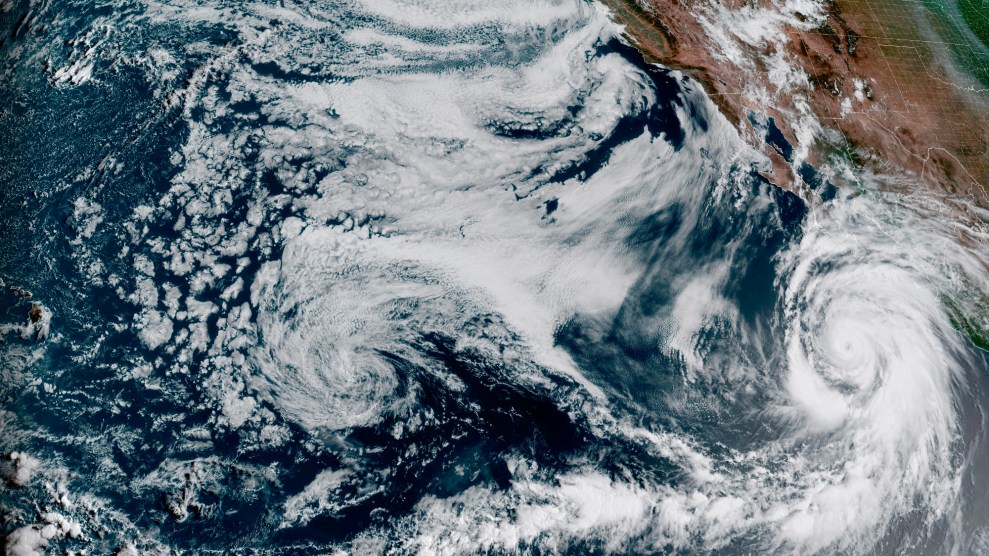
AP/NOAA
For the first time in more than 80 years, Southern California is under a tropical storm watch as Hurricane Hilary heads towards the region. The storm will head north along Baja California, and is expected to hit the southwestern border of the US on Sunday afternoon or evening. The National Hurricane Center noted on Saturday morning that a “potentially historic amount of rainfall” could lead to flash flooding and landslides.
The flood risk in southeastern California deserts is “genuinely alarming,” tweeted Daniel Swain, a climate scientist at the University of California, Los Angeles, who studies extreme weather events. Swain wrote that the storm could bring 1-3 years’ worth of rain in 2-3 days to parts of the Southwest; “that means that life-threatening inundation of both low and high desert regions is likely, and that major damage/destruction of infrastructure—including major roads and highways—is possible in the hardest hit areas.” The National Weather Service warns that flooding is the deadliest hazard associated with tropical cyclones.
Flood risk from #Hilary in SE California deserts is genuinely alarming. Widespread & possibly destructive flash flooding is possible. This has high potential to be a historic flood event in this region. See attached screenshot of @NWSPhoenix forecast discussion from this AM.#CAwx https://t.co/zgj3tG3mr4 pic.twitter.com/Oj9881gJUP
— Dr. Daniel Swain (@Weather_West) August 18, 2023
This hurricane comes as the US has been experiencing record heat waves, and just weeks after wildfires devastated Maui. So it’s easy to wonder—is this historic storm another harbinger of what’s to come with climate change? Swain says maybe. There haven’t been formal studies, but one of the reasons hurricanes typically do not make landfall in California is cool ocean temperatures. As temperatures continue to rise, “oceans near California still won’t be warm enough to sustain tropical cyclogenesis…but they may allow storms with a favorable trajectory to weaken less quickly”—meaning that while these hurricanes “will most likely remain rare,” as the oceans warm it’s possible they will be stronger when they do arrive.
Swain’s expert analysis can be found on his blog and YouTube livestreams as well as Twitter (now called X), at least for now. Reports of climate denialism on Twitter have been rising, some of which is directed at the scientists attempting to share educational, and potentially even life-saving information on the platform. Swain has not been immune: “the extreme volume of hate messages, personal threats, and climate denial [on Twitter] has become overwhelming in recent days,” he wrote on his blog, “and is now, for the first time, actively limiting my ability to use the platform as an effective tool.”














